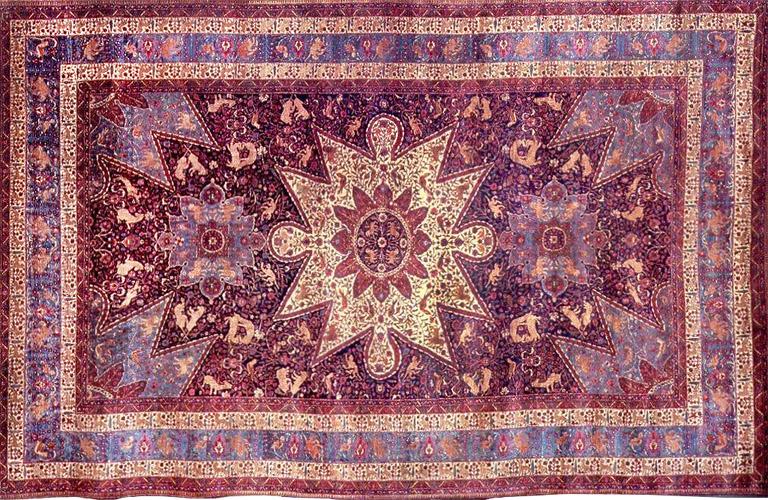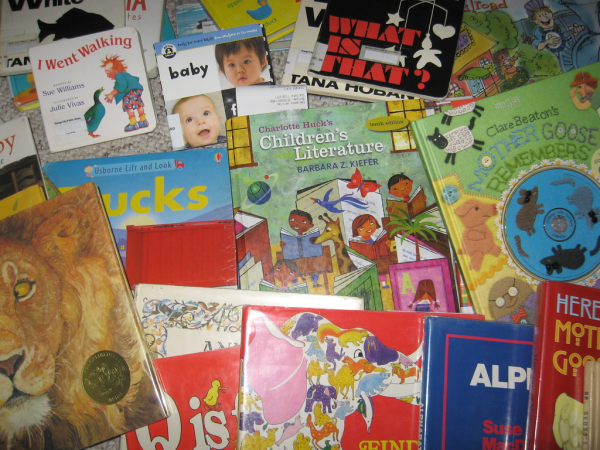Rug made by Armenian orphans to be unveiled at the White House
Photo via nazmiyalantiquerugs.com under Creative Commons License
Rug made by Armenian orphans after the Armenian Genocide in 1915. This rug was given to President Calvin Coolidge as a thank you gift for supporting and helping the Armenian nation.
The White House will display a rug made by orphaned Armenian children at the White House Visitor Center from Nov. 18 through Nov. 23. According to the White House, the rug was given to President Calvin Coolidge as a gift from the Armenian orphans in 1925 in honor of Americans’ support after the Armenian genocide.
According to the White House, the rug is eleven and a half feet by nineteen feet and has over four million hand-tied knots. The rug was originally placed in Coolidge’s home and was given to the White House as a gift from the Coolidge family.
Junior Lori Berberian, a former Armenian Youth Federation (AYF) member, said that she appreciates the rug being shown at the White House. “I think it’s a great idea,” Berberian wrote in a text message. “It is a form of propaganda and example of Armenian perseverance. It shows gratitude to the President of the United States and the American Government itself, for any aid or support they have given the Armenian people and the Armenian cause; living in and out of diaspora.

This is a book written by Dr. Hagop Martin Deranian. In the picture President Calvin Coolidge is admiring his gift from the Armenian orphans.
“It is a living testament of the Armenian genocide, and now that it is being displayed in the White House it will generate global attention to our cause and life long struggle for justice. It reaffirms the recognition of the Armenian genocide by the United States.”
An event was planned for the rug to be exhibited at the Smithsonian Institution, but the Obama Administration, for reasons untold, won’t allow the rug to be unveiled. This action is very controversial for the people in the Armenian community. “I think the American government [resorted] to appeasement to maintain their good ties with Turkey,” Berberian wrote in her text message. “This wouldn’t be the first time. Every year the American President fails to mention the word genocide when addressing the topic of the Armenian Genocide. This usually takes place in the month of April just before the anniversary of the Genocide on the 24th.”
Although many Armenians would agree that the action was made because of the great ties America has with Turkey, AYF member and junior Nazan Titizian said, “I’m sure the fact that we are allies with Turkey plays a great role in the rug not being shown, but who knows. I’m sure there are other reasons behind it as well.”
According to The Washington Post, the rug was supposed to be unveiled on Dec. 16, 2014, at the Smithsonian Institution. Besides the unveiling of the rug, the Smithsonian had planned to promote the book President Calvin Coolidge and the Armenian Orphan Rug, written by Hagop Martin Deranian.
“I heard about the rug from my advisors at AYF,” Titizian said. “At first I was really happy because it finally got the recognition it deserves, but I was also kind of sad at the same time that it took so long to receive this much praise. I feel hurt and angry that they wouldn’t allow something like that into the event. I mean, it was a gift to a former president. You would think they would let [this happen].”

America We Thank You: An Armenian Tribute to Near East Relief is an initiative of the Armenian National Committee of America Western Region.
The White House would not give any reasons as to why they would not allow the rug to be placed in the Smithsonian Institution, but one thing for sure is that many Armenians are upset. “It is unfair,” said former AYF member and Hoover graduate Madlen Benian. “After all, these years of hard dedication the Armenian Genocide is still not being acknowledged. I think it deserves to be placed in a more well- known museum. The Smithsonian Institution would be a great place for it to be stationed.”
Although the cancellation of the rug unveiling agitated some in the Armenian community, many still felt proud that their people did something great for America even after all the pain the Armenians went through during the Armenian Genocide. “I feel really good about this rug,” Titizian said. “The orphan children took it upon themselves to create something beautiful. I feel a great deal of pride.”
Benian said that if the rug was placed in the Smithsonian Institution it would be a legendary movement for the Armenian people. “With the 100 years of the Genocide approaching, it would be a positive step for the Armenian people if the U.S. government would finally accept the horrific act that was done to our people on April 24, 1915,” Benian said.

INTERESTS/HOBBIES: With my free time, I enjoy reading, hiking, watching tv, and hanging out with my friends.
EXTRACURRICULAR ACTIVITIES: For extracurricular...








